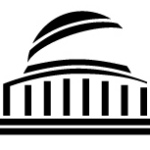
More reasons celebrate International Open Access Week, October 21–25
The thank-you note arrived with language echoing the voices of many other readers of MIT Open Access Articles: “I thought I would show my appreciation for the open access that MIT affords. Many projects and papers require access to cutting-edge studies and articles. Many of these are unfortunately stuck behind paywalls. Having access to these types of information has helped me succeed.”
But the author of the note may not be who you’d expect: it was a graduate student at an American university. Reader comments sent to the MIT Libraries make clear that while many beneficiaries of the MIT Faculty Open Access Policy come from developing nations, where institutions and individuals can afford fewer resources, a growing number come from the United States, where even well-funded colleges and universities are increasingly forced to limit access to journals in order to make ends meet. Scholarly journals can cost more than $10,000 a year and subscription prices continue to rise, leading to cancellations and reduced access.
US students, even those associated with a university, therefore have much to gain from open access. As one astrophysics student recently wrote: “While doing preliminary research, I stumbled upon one of your articles. The articles not only provided me insight, but also directed my further searches, leading me on different paths than I had considered, and considerably expediting the process.”
Another student commented that “Thanks to MIT Open Access, I was able to read a high-quality document on a subject in which there has been very little research. I discovered that I’m not alone in my research interests, however esoteric some of [them] may seem. I found a very insightful article that took me to a new level of inspiration.”
For those not associated with a university, the need for access is particularly pressing. In the last six months alone, MIT heard from artists, engineers, independent researchers, and authors who all made similar comments: They felt excluded from scholarly research because of article costs, and the articles they found and read in DSpace@MIT gave them the opportunity to, as they wrote, “catch up on new ideas,” “open my mind beyond the talking points of the day,” or “find further research.”
Readers also gain personally, including one individual who used a DSpace@MIT article as a resource for medical information. He wrote that he began to think about bone elasticity as being implicated in a fracture he had recently sustained: “The article assisted me in understanding the role of collagen in bone growth and renewal and, in turn, led me to further research into dietary modifications that I can implement.”
The need for access expressed by these US-based readers has not been lost on the Obama administration or the US Congress. In mid-February, members of Congress introduced a bill that would require a dozen US government agencies—including the Department of Education, the Department of Energy, and NASA—to make articles that result from research they fund publicly available on the Internet. A week later, the White House Office of Science and Technology Policy issued a directive to an even larger group of federal agencies requiring that they devise plans to develop open access policies. Those plans were due in August and are now under review. Both the bill and the directive build on the successful public access policy adopted by the National Institutes of Health (NIH) in 2008.
Meanwhile, right here at MIT, the voices of grateful readers—whether in the US or beyond—reflect and consummate the faculty’s commitment to “disseminating the fruits of [their] research as widely as possible.” As one reader wrote: “It is wonderful to have the chance to go straight to the source and learn something about how knowledge is produced at the best places.”
(a version of article originally appeared in the MIT News)

